How to Build a Strong Business Case

Learn how to create an effective business case using qualitative and quantitative data to source funds for your next project
You have your next big idea or a new software platform that you want to adopt to ultimately increase your team’s efficiencies and improve reporting, but you’re not sure how to get approval from management. Learn the best practices behind composing a strong business case to greenlight your next project.

The importance of a strong business case
Building a strong business case is critical if the aim is a greenlight for your next project. The details included within a strong business case set the expectations of your project, provide quantifiable measurement of project deliverables, and contribute to improving your personal credibility within an organization.
A strong business case:
- Sets expectations
- Measures the value of deliverables
- Improves your credibility
When to create a business case
How do you know when you should create a business case? While a business case can be created for any new initiative, idea or project, the necessary effort to compose a strong business case might outweigh the intended value for just any idea.
In short, be selective about when you create a business case. Exert the time and research needed to explore every possible angle of the decision-making process and compose a bullet-proof argument in your favor.
Five examples of when to create a business case
If you find yourself in any one of these situations, we recommend you take the time to build a strong business case to increase the likelihood of project approval.
How to write a strong business case
The purpose of your business case is to provide all the facts needed for your stakeholders to make an informed decision in your favor. At the completion of your business case, your stakeholder should have a clear picture of what the end result comprises and understands the implications to project green light.
Three core components to include in a business case:
An Example Business Case
Below we review how to compose the three core elements of a strong business case through an example from an Onspring customer.
This customer was interested in expanding the use of Onspring beyond IT risk management by incorporating their vulnerability management program. In doing so, this customer would need to integrate Onspring with vulnerability scanners, which meant time and effort from the existing IT resources. To keep his team focused on running IT operations, the IT Director wanted to hire Onspring to manage this integration and a custom configuration to match existing scanning processes.
Here’s how he composed the business case to secure funding.
Current Situation
The IT Director first recapped the progress made to date using Onspring across the business. Take note of how he specifically outlined the quantitative metrics achieved across four categories: intelligence, alignment, governance, and resilience.

Supporting visual demonstrations helped to communicate the progress made, as well as the current gap to be resolved.
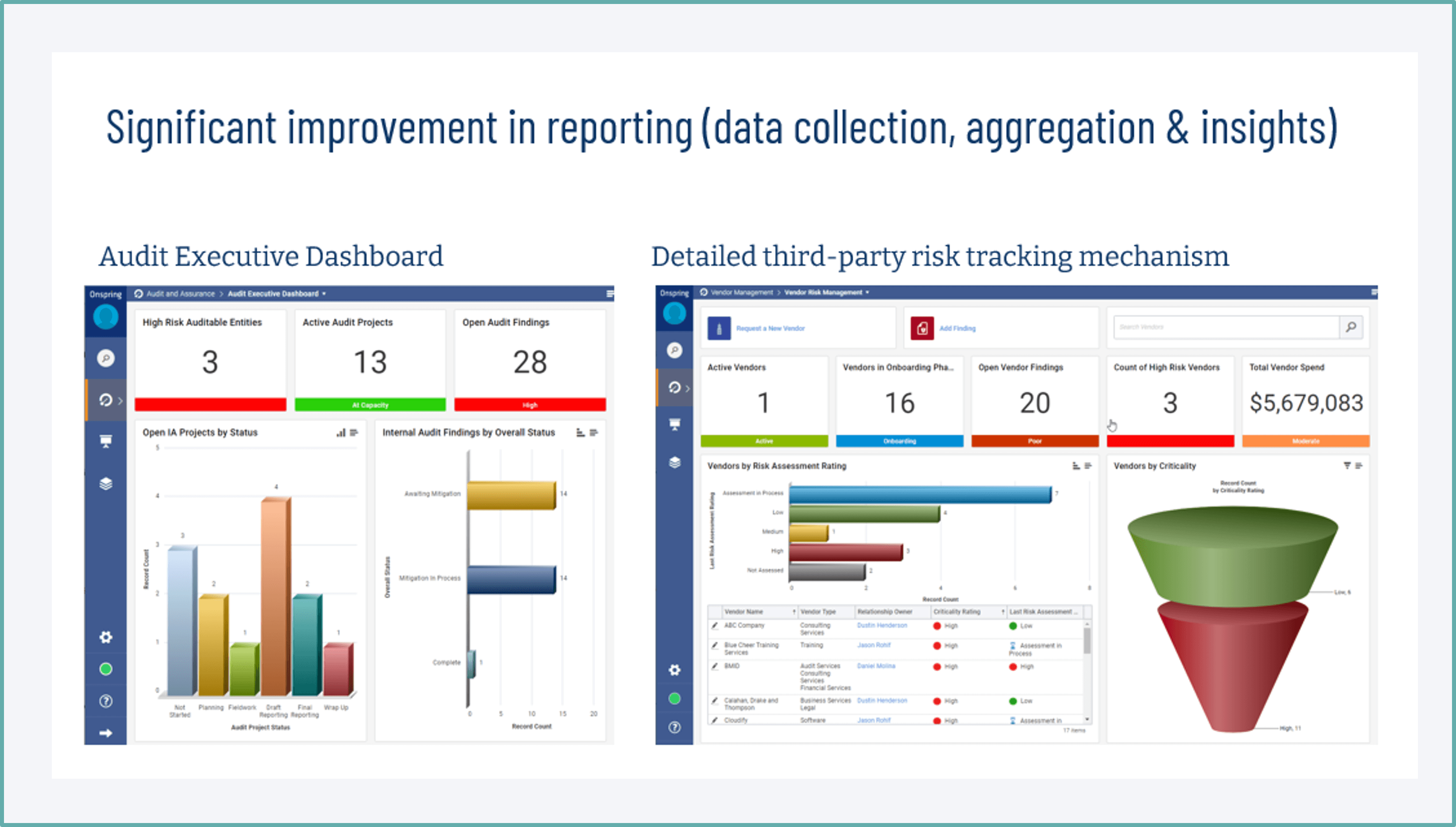
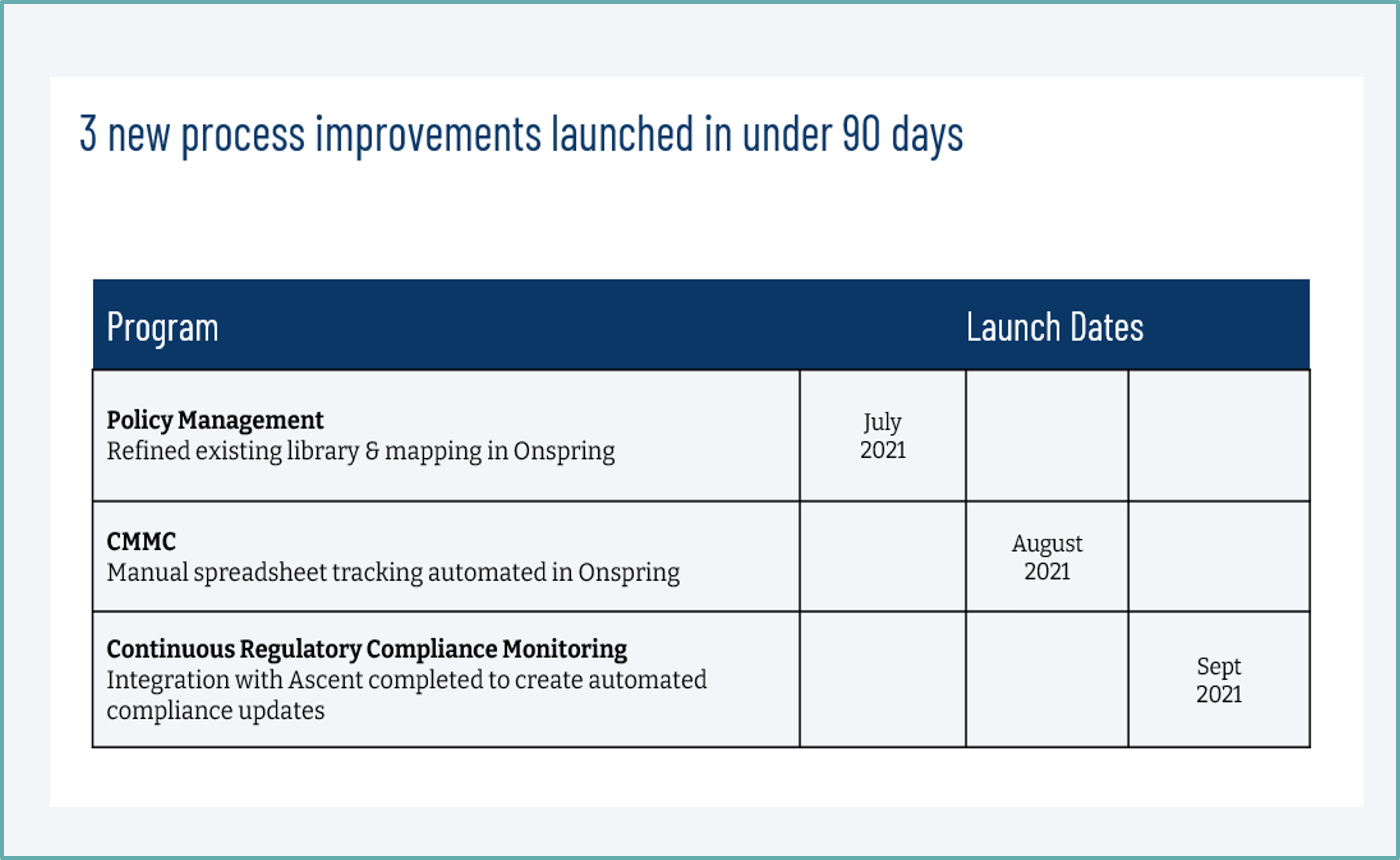
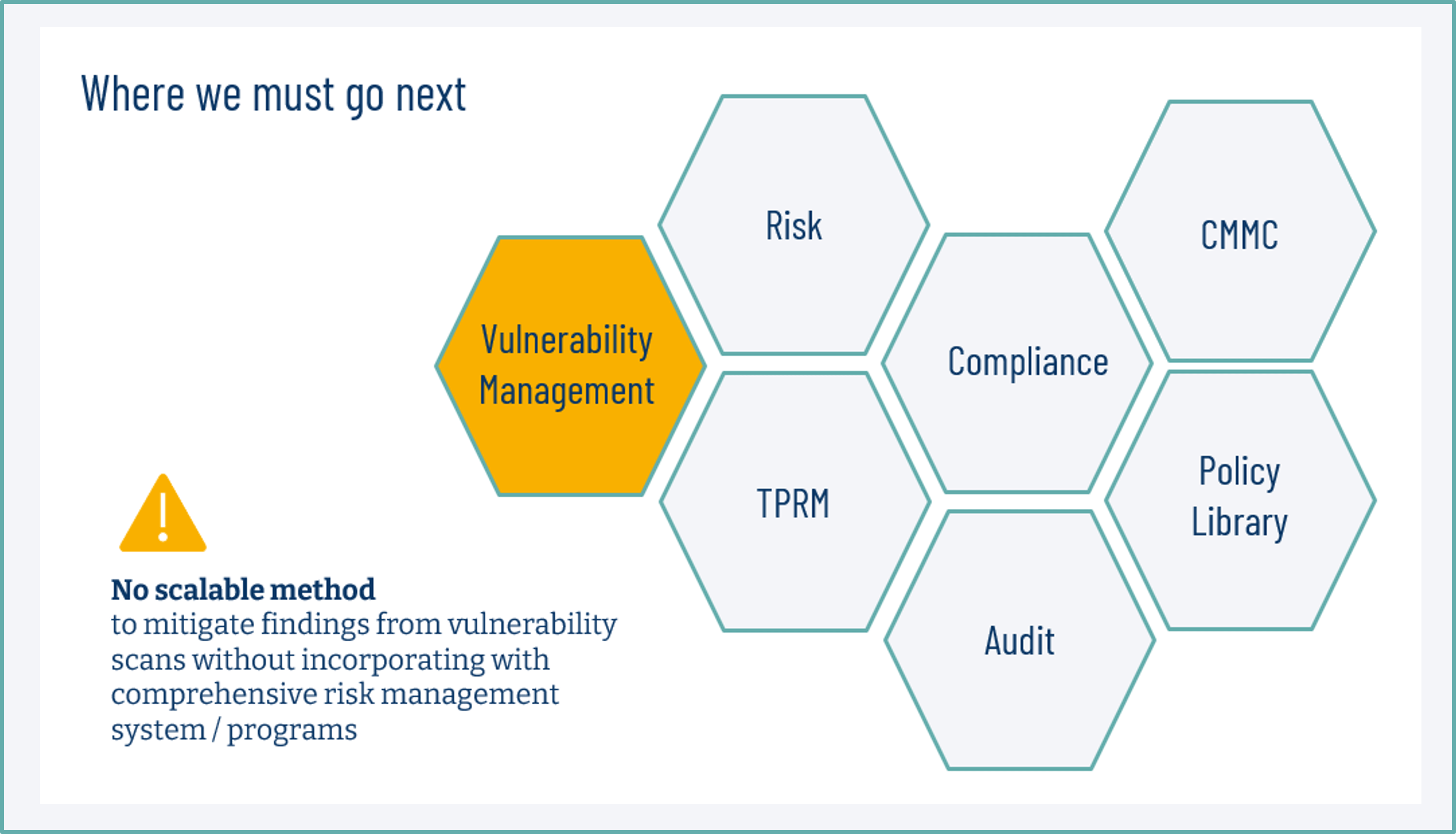
Potential Opportunity
Next, the IT director outlined the value back to the business by incorporating vulnerability scanning into the Onspring platform.
Again, quantitative and qualitative metrics were used to drive home the value in both financial and time-savings results.

And, supporting visual examples of tangible value were added to clearly paint a picture of the potential opportunity.
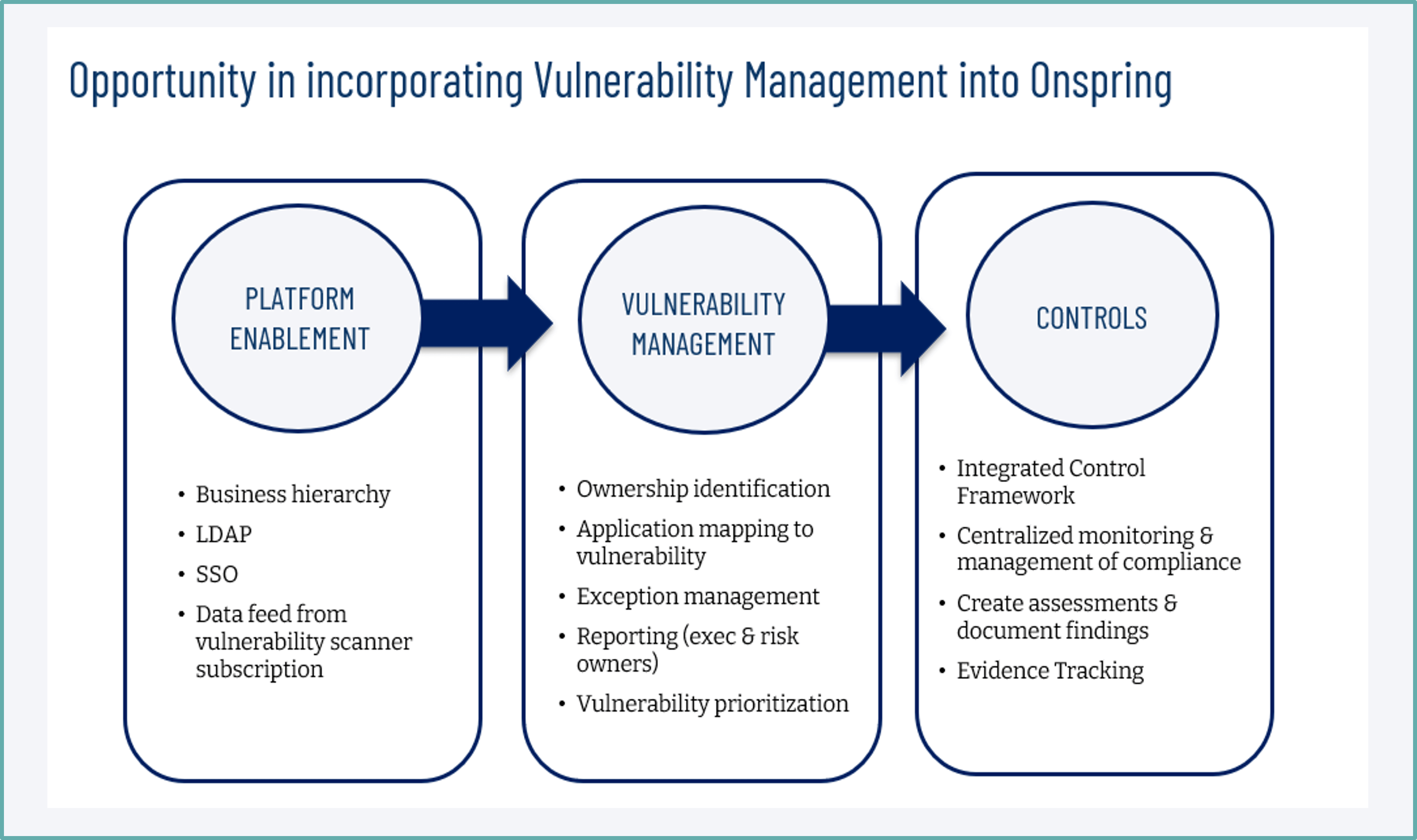
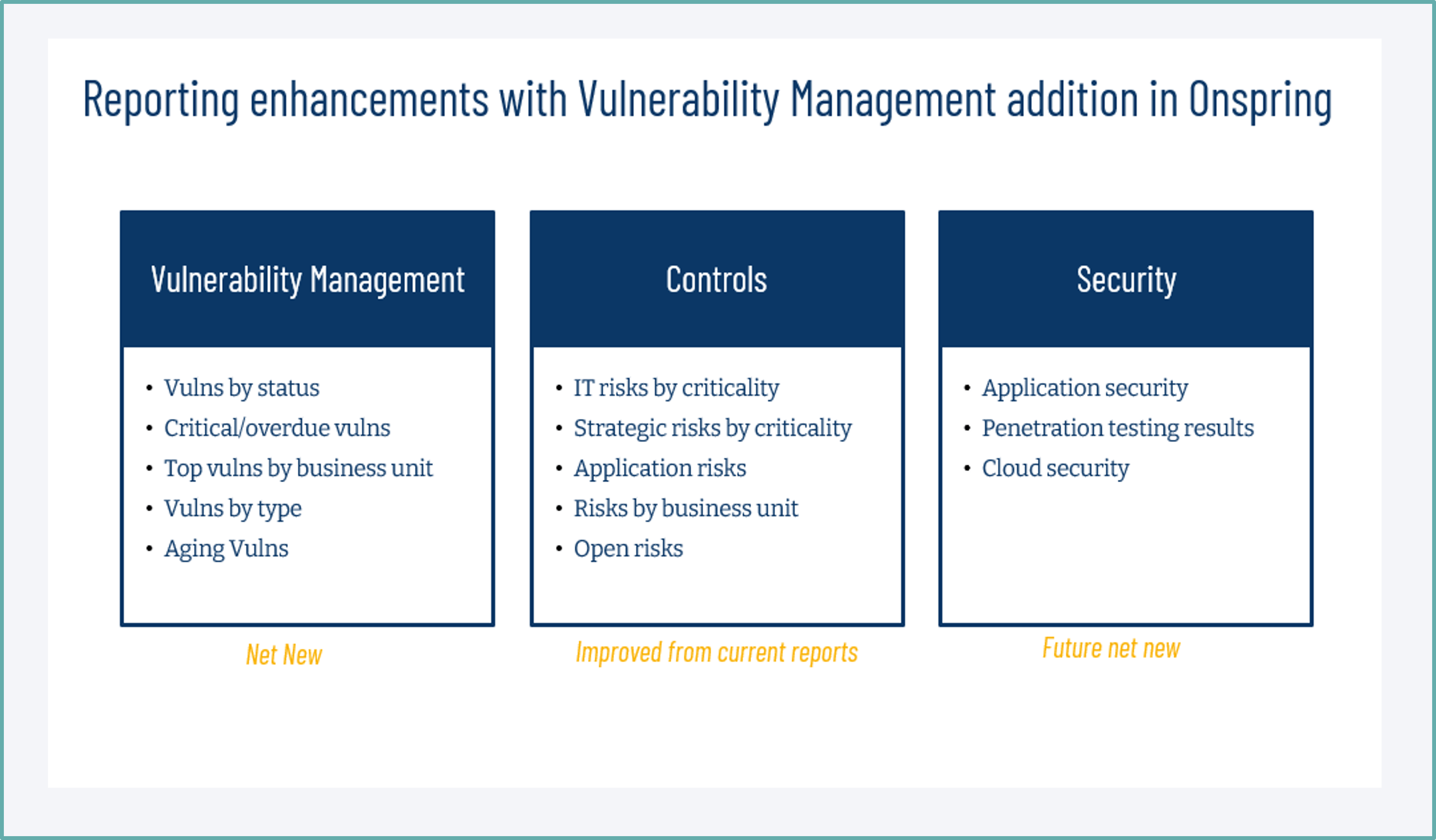
Specific Ask
Using a very clear and direct communication style, this IT director outlined the specific ask to stakeholders: the funds and timeline needed to accomplish this project.
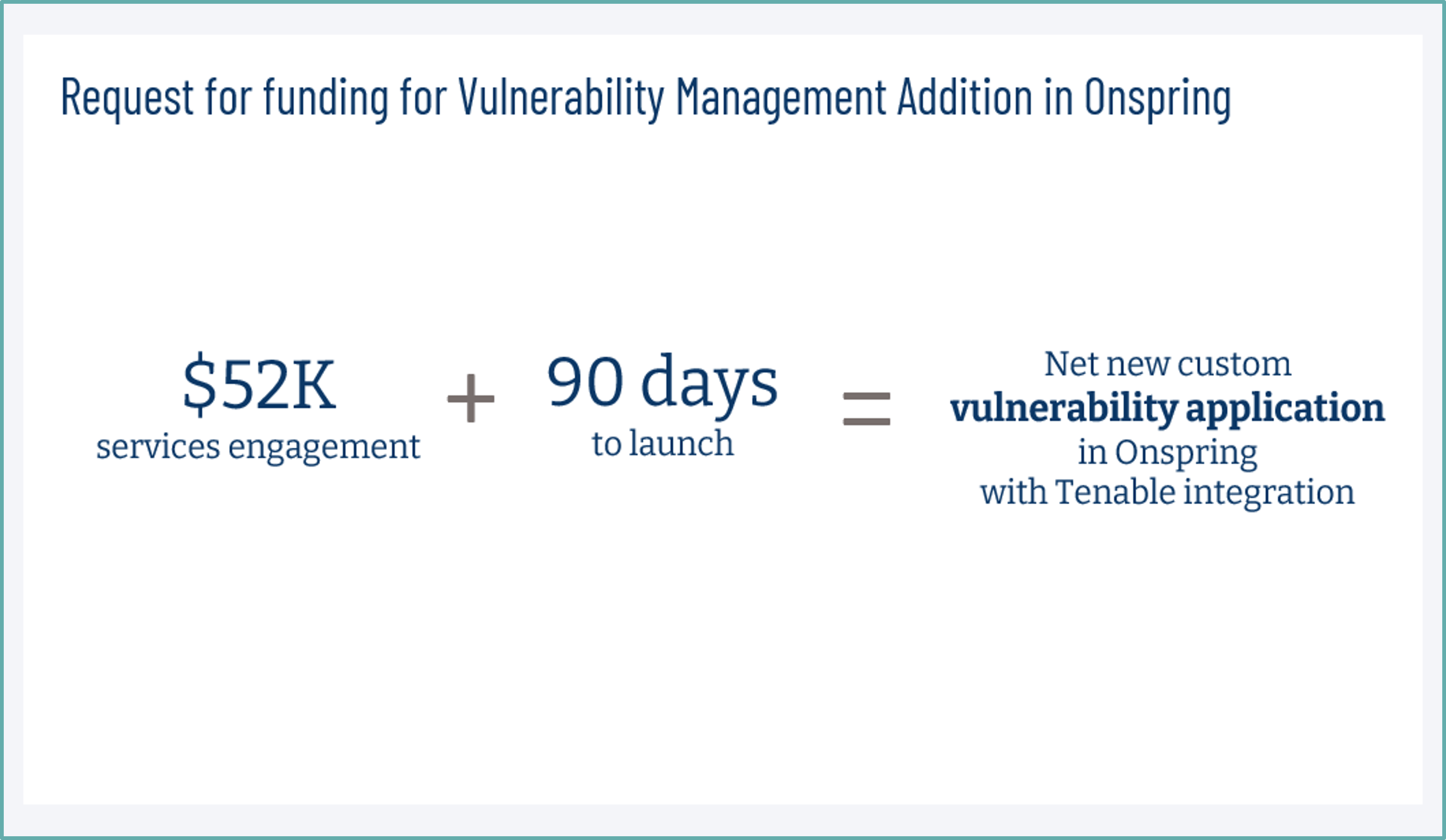
To add confidence to the ask, supporting information was added to outline the project plan, staffing plan, and scoping elements.
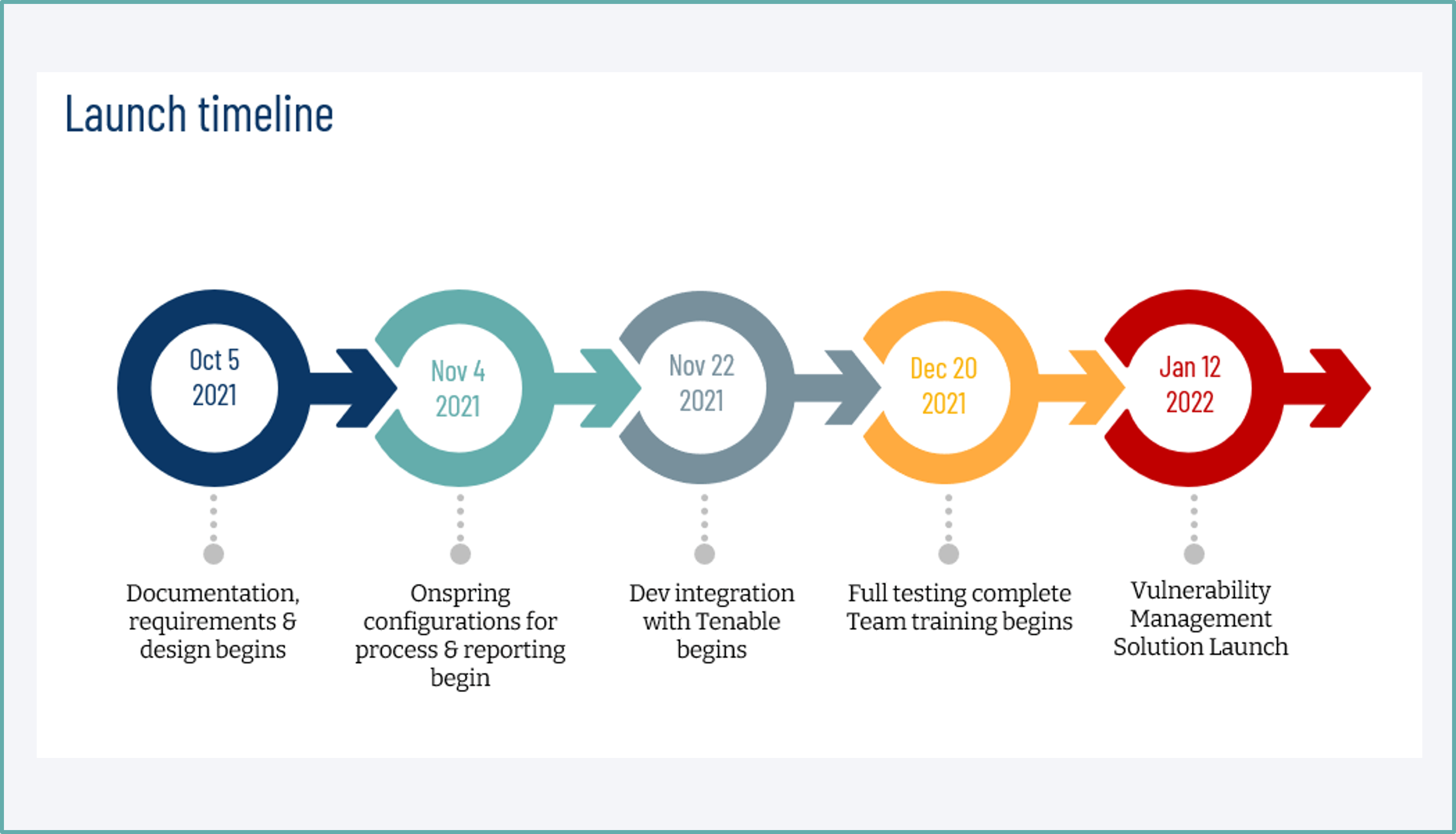
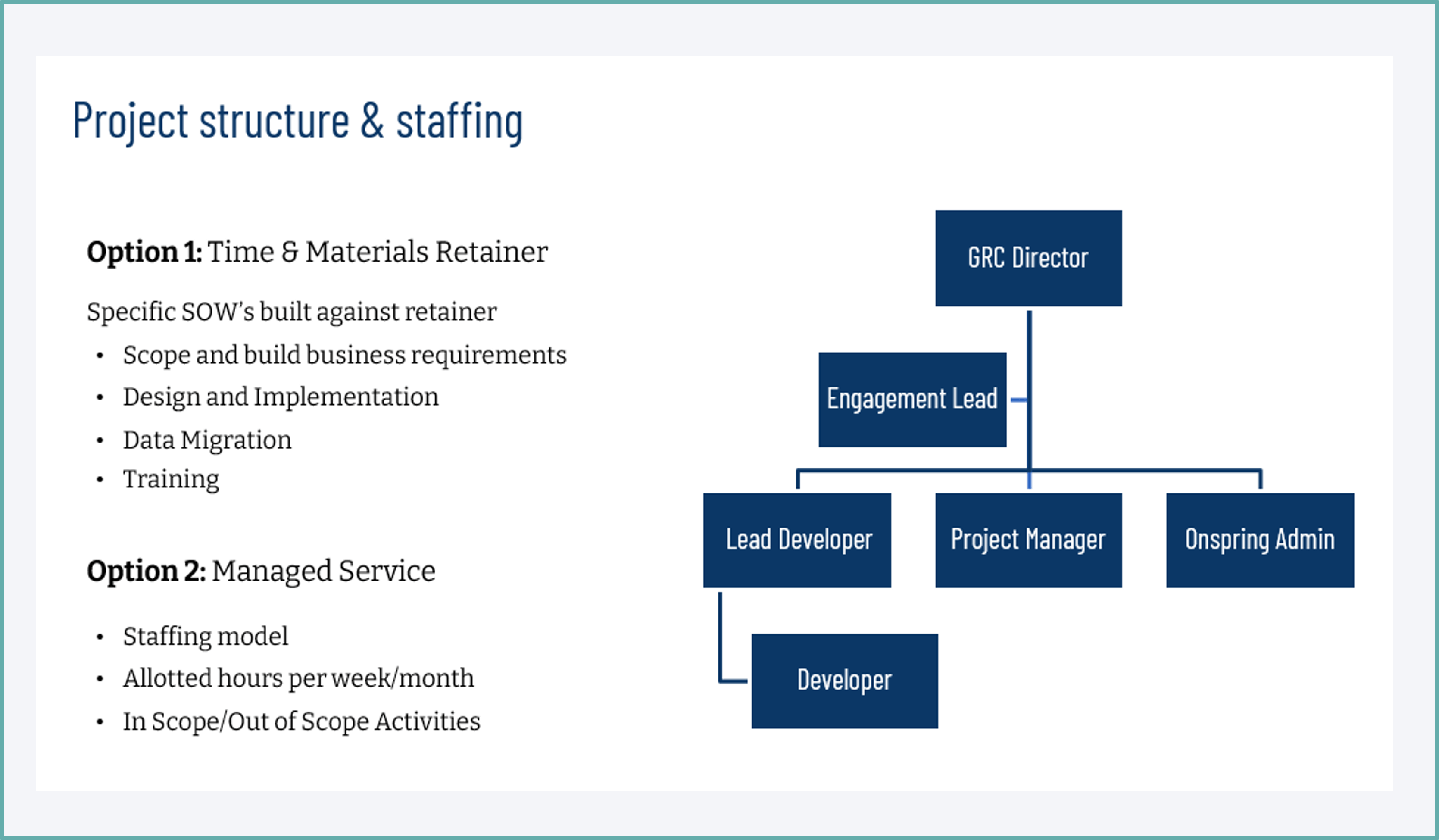
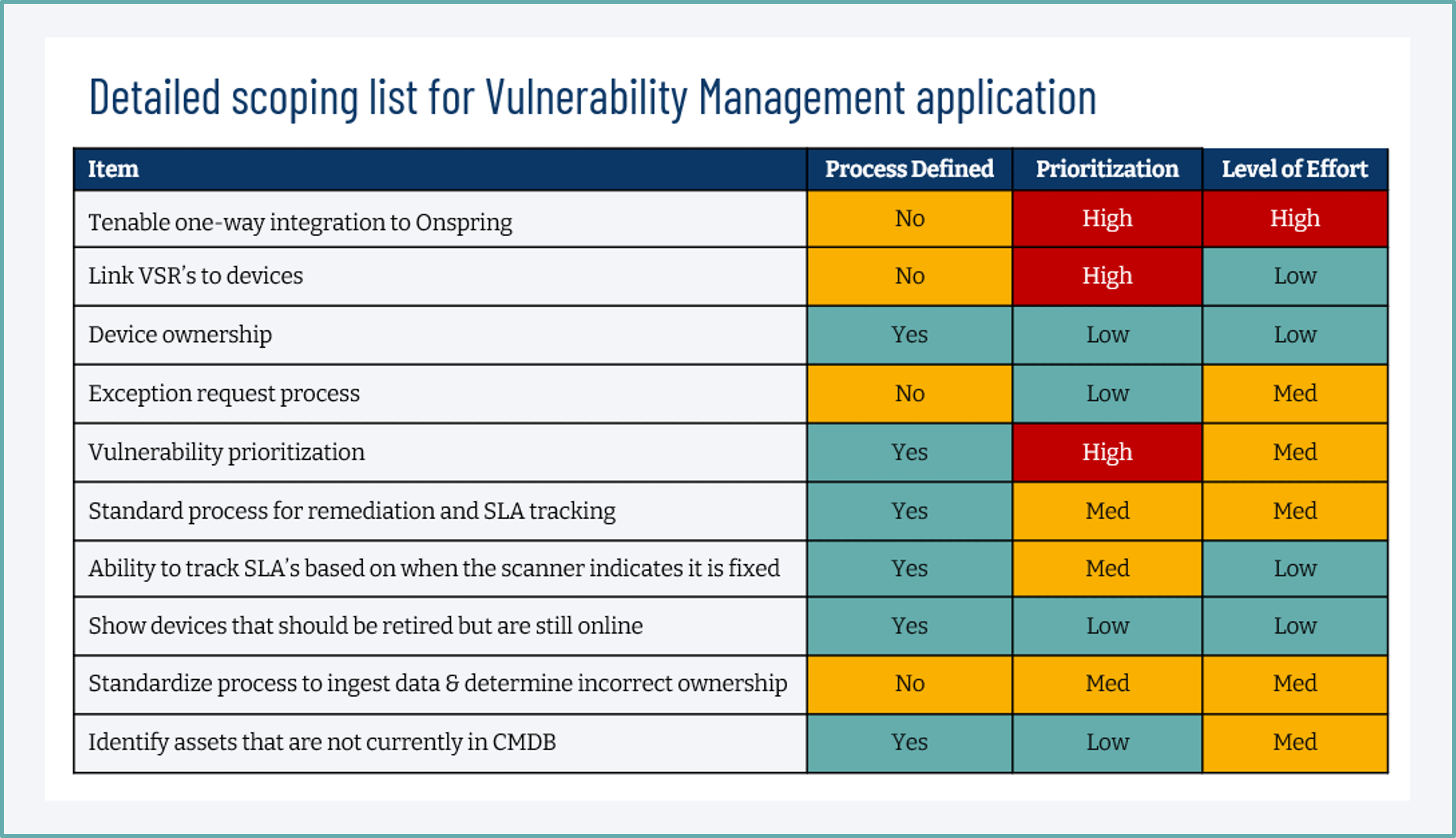
How to present your business case
Delivering your business case in front of stakeholders requires confidence. The best way to build self-confidence before a presentation is to conduct due diligence. Know your subject matter inside and out before your presentation.
With a comprehensive understanding of your situation, potential opportunity, and specific ask, you can confidently field any question from stakeholders. Confidence in your verbal delivery is just as important as the accuracy of your answers and recommendation.


